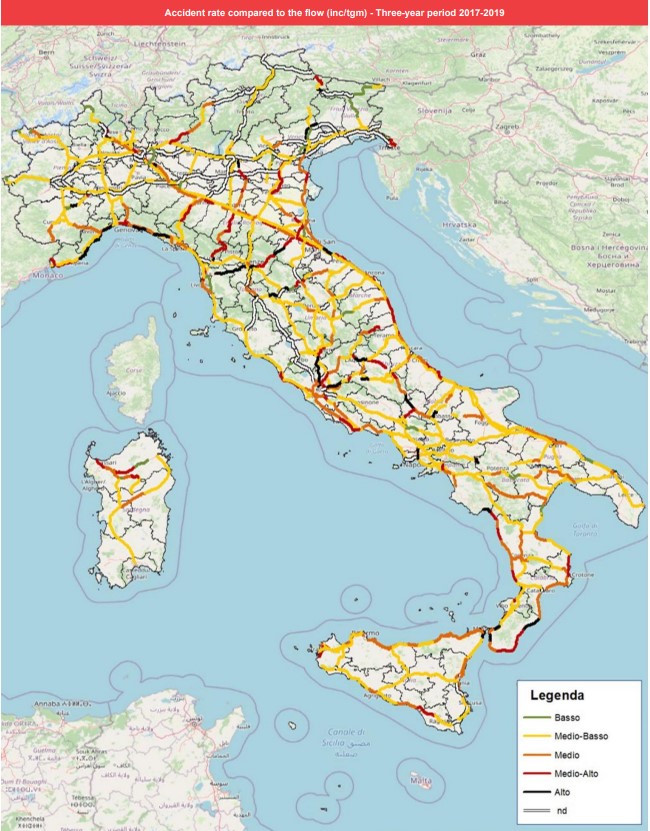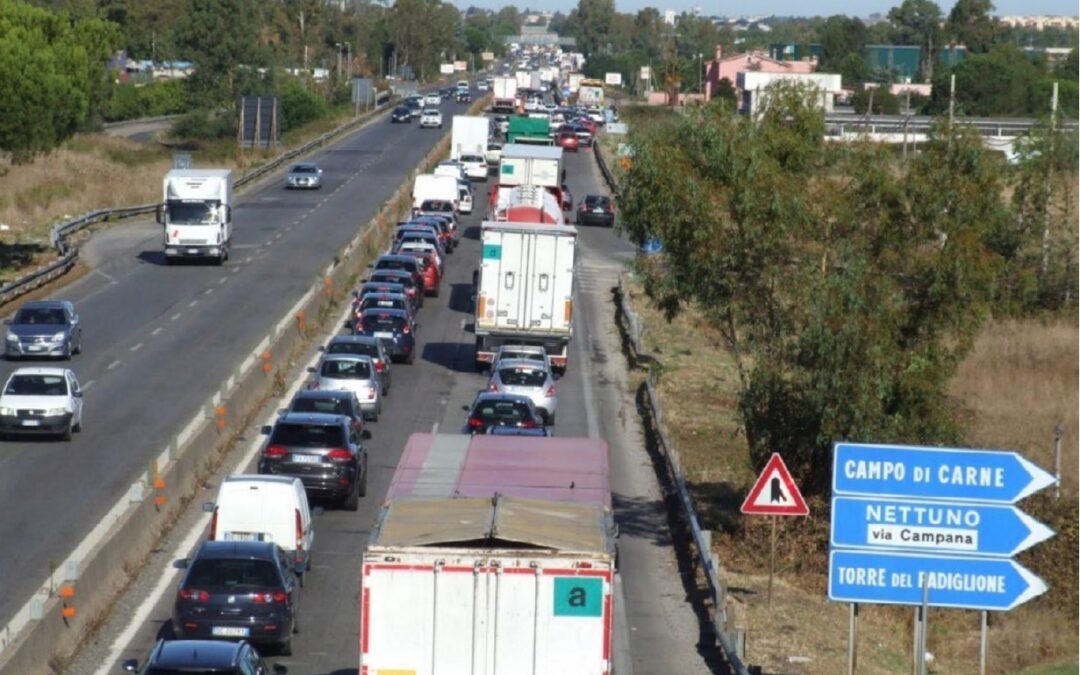A three-year project by Automobile Club d’Italia (ACI) has analysed the safety of 17,500km of Italy’s primary road network to understand the investments and speeds required to save lives and serious injuries, aligned to international targets and Europe’s RISM Directive.
The study, supported by iRAP Accredited Practitioner FRED Engineering, has prepared a crash risk rate map of the Trans-European Road Network in Italy, as well as Star Rating and Safer Roads Investment Plans for sections of three priority roads in the Lazio region:
- State road SS148 (via Pontina), section Roma EUR – Aprilia (34 km, dual carriageway);
- State road SS04 (via Salaria), section Monterotondo – Amatrice (108 km, single and dual carriageway);
- Motorway A1 (Autostrada del Sole), section Roma GRA/A90 – Frosinone (67 km, dual carriageway).
Road traffic crash data for the last three-year period 2017-2019 showed that in 51,080 localized road crashes recorded, 1,908 people lost their lives and 84,188 were injured.
The following map presents the crash rates compared to flow:

Crash Risk Mapping uses fatal road traffic crash data to capture the combined risk arising from the interaction of road users, vehicles and the road environment. Risk Maps provide an indication of the overall road system performance. They provide an at-a-glance and objective view of where fatal and serious crash risk is greatest through a five-color scale: green = very low risk, yellow = low risk, orange = medium risk, red = high risk, and black = very high risk. Risk Maps were used to guide the selection of the road sections.
The study of the crash rate risk map identified a priority 300 km of road network, including 95.8 km of single carriageway roads and 113.5 km of dual carriageway roads.
Surveys were carried out by FRED Engineering and the collected data was processed through the ViDA software in order to be assessed according the iRAP Methodology.
The Star Rating results showed a high level of risk for all road user groups, especially motorcyclists. Sixty-three (63%) of the road network analyzed rated only 1 or 2-stars for safety for vehicle occupants, while the percentage of critical stretches for motorcyclists reached 94%.
Star Ratings are an objective measure of the level of safety ‘built-in’ to the road for all road users – vehicle occupants, motorcyclists, pedestrians and bicyclists. Star Ratings range from 1-star (least safe) to 5-stars (most safe). They are calculated on the basis of more than 50 attributes of the road which are known to influence the likelihood of road traffic crashes or the severity of the outcome (including infrastructure features, roadside hazards, road user flows and operating speeds).
Whilst the infrastructure characteristics of the roads were noted as generally high performing (for example, the presence of safety barriers and the quality road surface of the Italian motorway), the star ratings and severity of crashes were negatively impacted by high speeds expressed both in terms of speed limits and operating speeds.
The ACI analyses have made it possible to not only identify risks and critical safety issues, but also to propose recommended safety countermeasures.
Safer Roads Investment Plans (SRIP), produced within ViDA drawing on data underpinning the Star Ratings and fatality and serious injury (FSI) estimates, will guide strategic investment in road upgrades to eliminate high-risk road sections to save lives and serious injuries on the network.
The analysis has shown that if proper speed management is preemptively established (through enforcement or other measures), realistic ‘low-cost’ SRIPs, tailored to the specific road contexts, can be put in place to achieve global 3-star or better safety targets.
Sensitivity analyses were also carried out to test the impacts of different values of operating speeds against existing conditions, the results of which will be taken into account in future developments of the iRAP model.
Detailed results reports have been shared with the local road authorities (ANAS and ASPI Autostrade per l’Italia).
Further results of the 2022 assessment project will be published in ACI’s next Ondaverde magazine (Issue 46).
The ACI study aims to meet the requirements of Europe’s Road Infrastructure Safety Management Directive 2008/96/EC, amended by Directive 2019/1936/EC, and its local transposition in Italy with Legislative Decree 35/2011 which was applied only in 2019-2020 on the TEN (Trans European Network) network with a road inspection programme for which the results have not yet been disseminated.
For further information:
- “Road Infrastructure Inspections to Assess the Road Network According to the iRAP/EuroRAP methodology” – Conference Paper presented at AIIT 3rd International Conference on Transport Infrastructure and Systems (TIS ROMA 2022), 15-16 September 2022
- In-depth analysis of the results of 2021 inspections published in Ondaverde Issue 44 (In Italian – see page 19)
- Risk map and early results published in Ondaverde Issue 41 (In Italian – see page 12)
Images credit: ACI


















